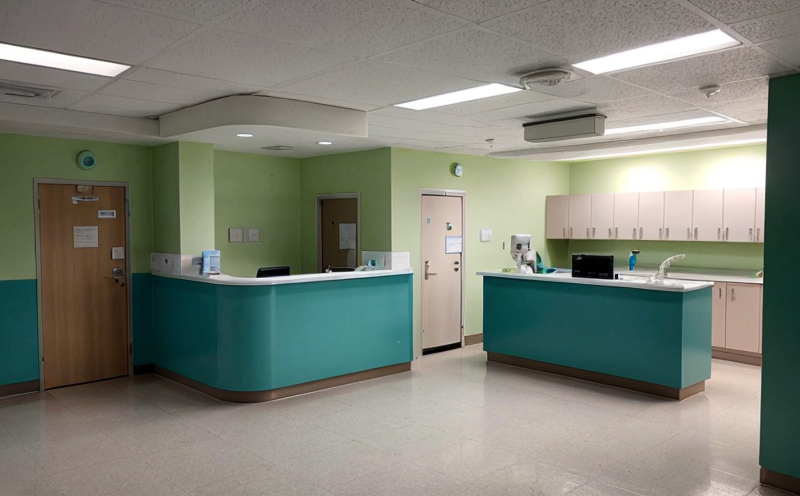ANSI/AAMI ST72 Bacterial Endotoxin Testing in Hospital Sterile Products
The ANSI/AAMI ST72 standard is a crucial document for ensuring the safety and efficacy of hospital sterile products. It provides detailed guidelines for bacterial endotoxin testing, which is essential to prevent nosocomial infections caused by pyrogenic reactions.
Bacterial endotoxins are lipopolysaccharides found in the outer membrane of Gram-negative bacteria. These toxins can trigger a strong immune response leading to fever, hypotension, and shock if they enter the bloodstream of patients receiving intravenous (IV) therapy or other medical devices.
The ANSI/AAMI ST72 standard focuses on the use of the Limulus Amoebocyte Lysate (LAL) test as a primary method for detecting bacterial endotoxins. This test is based on the lysate's ability to coagulate in the presence of endotoxins, which then forms visible clots.
This service ensures that sterile products meet stringent regulatory requirements set forth by organizations such as the U.S. Food and Drug Administration (FDA) and the European Medicines Agency (EMA). Compliance with ANSI/AAMI ST72 is not only a legal requirement but also a critical step in ensuring patient safety.
The testing process typically involves several steps, including sample preparation, dilution, inoculation of LAL reagent, incubation, and visual observation for clot formation. The results are then analyzed using statistical methods to determine compliance with the specified limits.
Our team of experts uses advanced laboratory equipment and adheres strictly to international standards to ensure accurate and reliable test results. This includes employing calibrated instruments like particle counters, automated pipettes, and high-performance liquid chromatography (HPLC) systems for additional validation where necessary.
| Phase | Description |
|---|---|
| Sample Preparation | Involves thorough cleaning and sterilization of the sample container, followed by precise aseptic transfer into the LAL reagent. |
| Dilution | Adjusting the concentration of the sample to ensure it falls within the linear range of detection. |
| Inoculation | Adding a known volume of diluted sample into the LAL reagent and mixing thoroughly. |
| Incubation | Allowing sufficient time for any endotoxins present to interact with the LAL reagent, causing visible clots. |
| Clot Observation | Visual inspection of the reaction vessel for clot formation within a specified timeframe. |
The results are interpreted according to the threshold set by ANSI/AAMI ST72, which varies depending on the type and intended use of the product. For instance, intravenous solutions must have no detectable levels of endotoxins.
Why It Matters
The significance of bacterial endotoxin testing cannot be overstated in the healthcare sector. The aim is to eliminate any risk factors that could lead to severe adverse reactions in patients, especially those who are immunocompromised or undergoing surgical procedures.
Bacterial endotoxins can cause a condition known as pyrogenic fever, which can have serious consequences for vulnerable populations. By adhering to ANSI/AAMI ST72 standards, healthcare institutions and manufacturers contribute significantly to maintaining the highest levels of patient safety and product efficacy.
Scope and Methodology
| Parameter | Criteria |
|---|---|
| Bacterial Endotoxin Limit | <0.5 EU/mL for IV solutions, <1.0 EU/mL for other parenteral products. |
| Incubation Time | 6 hours for non-low dose products, 24 hours for low-dose products. |
| Visual Inspection Interval | Every hour during the incubation period to monitor clot formation. |
The methodology described above ensures that all samples are handled with care and precision, resulting in accurate test outcomes. Our laboratory is equipped with state-of-the-art facilities designed specifically for this type of testing, ensuring consistency and reliability across all projects.
Why Choose This Test
- Comprehensive compliance with ANSI/AAMI ST72 standards
- State-of-the-art laboratory equipment for precise measurements
- Dedicated team of experts trained in biocompatibility and microbiology
- Accurate interpretation of results using advanced statistical methods
- Timely delivery of reports to meet regulatory deadlines
- Confidentiality and security measures for handling sensitive data





